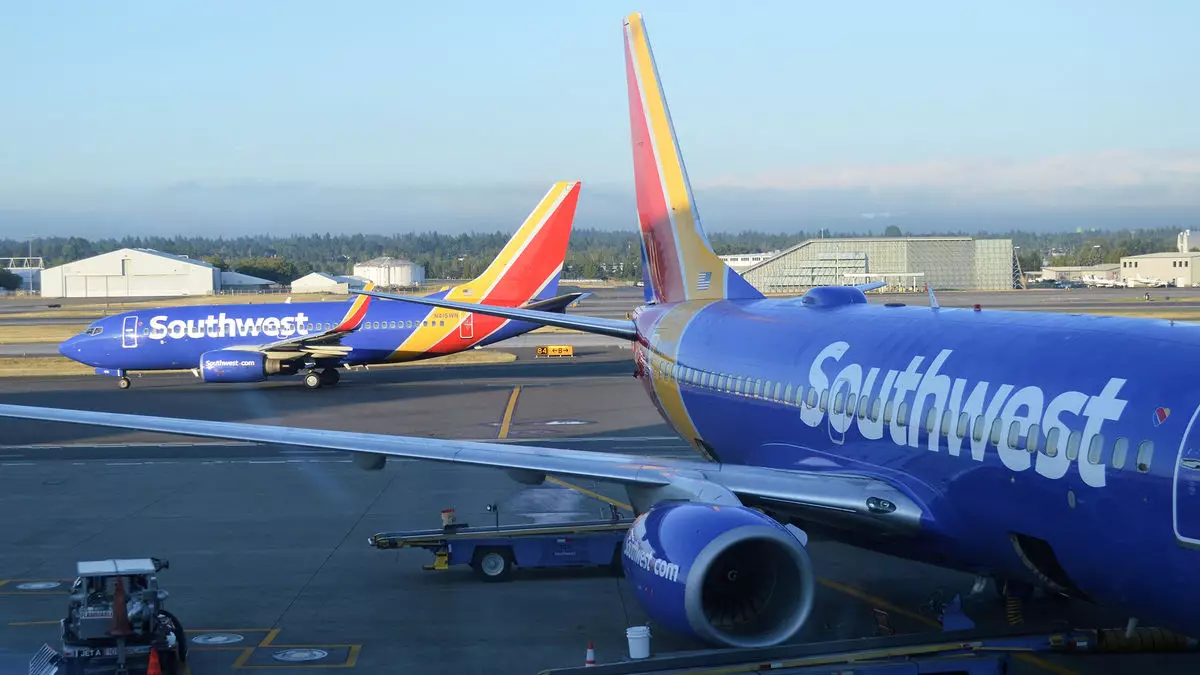The corporate landscape can often resemble a battleground, particularly in industries that are as competitive and dynamic as the airline sector. In this context, the recent developments surrounding Southwest Airlines and Elliott Investment Management reflect a significant shift in governance, culminating in a strategic agreement between two powerful entities. Elliott’s decision to withdraw its proxy challenge, aimed at reshaping Southwest’s board, raises questions about the implications for the airline’s leadership and future direction. This article will explore these aspects, dissect the new board composition, and ponder the potential consequences for Southwest Airlines.
Elliott Investment Management, a prominent shareholder in Southwest Airlines with an 11% stake, initially sought to exert pressure on the airline’s management. The hedge fund’s criticism was largely rooted in perceived stagnation and a lack of innovation under the leadership of CEO Bob Jordan and Chairman Gary Kelly. By calling a proxy vote for December 10, Elliott aimed not only to challenge the existing board but also to position its eight nominees for majority control, effectively shaking up the airline’s governance structure. The stakes were high, with allegations that slow decisions had negatively impacted financial performance, resulting in a targeted share price of $49 by June—a stark departure from the existing $29.
A New Governance Structure
However, rather than escalating the confrontation, a negotiated settlement emerged. Southwest’s agreement to reconstitute its board, which includes six new appointees—most of whom were Elliott’s nominees—signifies a shift in strategy while retaining the current executive leadership. The inclusion of seasoned professionals such as David Cush, former CEO of Virgin America, and experienced figures from diverse sectors illustrates a proactive approach to corporate governance. While retaining CEO Bob Jordan’s position might seem like a concession to incumbency, the imposed changes suggest a pathway for renewal and accountability in executing the airline’s transformation plan.
Chairman Gary Kelly’s accelerated departure from May to November indicates a willingness to enable fresh perspectives within the boardroom. It raises the question of whether the successor will champion the necessary cultural and operational transformations necessary to bolster Southwest’s market position.
New Directions in Operational Strategy
The reshaped board, now housing a mix of continuity and change, especially with three of Elliott’s nominees excluded from the agreement, will be pivotal as it guides the company through significant strategic transformations. Southwest Airlines has laid out ambitious goals: projecting an additional $4 billion in revenues and improving operational margins by 10% by 2027.
This forward-looking strategy includes plans to implement extra-legroom seating and transition to assigned seating by 2026, showing an adaptability that speaks to evolving consumer preferences. Moreover, the new airline partnerships and the relaunch of its vacation-package brand reflect a bold attempt to diversify offerings and enhance customer value.
The financial outlook remains robust. Through measures such as increased fleet utilization and reduced aircraft turnaround times, Southwest is positioning itself for greater competitiveness in an industry where margins are slim, and customer experience is paramount. Such initiatives cannot only mitigate operational delays but also enhance overall efficiency, appealing to both corporate and leisure travelers.
By unraveling operational bottlenecks and embracing innovative service models, Southwest seems poised to respond adeptly to the challenges it faces. However, with a large part of its governance largely unchanged, skepticism remains regarding the depth and sustainability of these changes.
Ultimately, the cooperation between Elliott Investment Management and Southwest Airlines marks a delicate confluence of interests, balancing the demands for accountability and innovation against the background of a solidified leadership core. Whether these changes will serve as the catalyst for Southwest’s dynamic reinvention or simply a temporary fix remains to be seen. The next few years will reveal if this board can effectively steer the company through the competitive skies ahead, ensuring that Southwest not only recovers but soars to new heights.


Leave a Reply